What to do with old strawberry bushes?
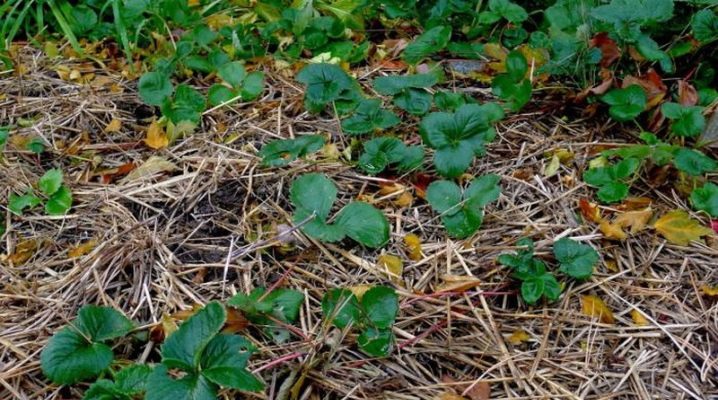
Strawberries are a culture that requires careful and regular care from a summer resident. Only with this approach to cultivation will it be possible to achieve the maximum yield. But any plant ages with age, so nothing will save strawberries from chopping fruits and other unpleasant consequences. It is worth taking a closer look at how to deal with old strawberry bushes.
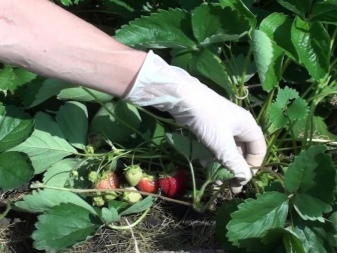

Definition of "old age"
Garden strawberry is a crop that is characterized by stable fruiting. The plant produces berries with a high nutritional value, which encourages gardeners to grow it on the site. However, over time, the fruit becomes less, and the bushes begin to degenerate.
The average lifespan of a strawberry is 5 years. Stages of culture growth.
- In the first year, any specimen gains strength and builds up its vegetative mass. In the process of growth, strawberries release strong mustache shoots and are characterized by unstable fruiting.
- The next two years are characterized by high yields. It is possible to collect a large number of juicy fruits from the bushes.
- The third and fourth years are the beginning of plant degeneration. Strawberries age and wilt, which negatively affects productivity indicators.
When you reach the last stage, you need to take care of updating the instances. It will be possible to understand that the plant has begun to age by the presence of diseases or pests. The immunity of such plants is markedly reduced.
Another sign that can be used to determine wilting is the crushing of the berries, as well as the loss of fruit taste. Finally, you can tell an old strawberry from a young one by its short and thickened stem and a small number of leaves.
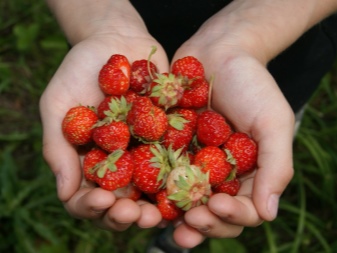

How to rejuvenate strawberries?
Strawberries are demanding to care for, and not only the yield, but also the frequency of rejuvenation depends on the gardener's approach to growing the bush. The size of the garden plots does not always allow transplanting strawberries to a new bed. Therefore, it is recommended to resort to the renewal of aging plants. There are several ways to carry out such a procedure, it is worth considering each of them in more detail.
Pruning
Held twice a year. The procedure involves pruning dry leaves and whiskers that have not survived the winter. Thus, the gardener will free the strawberries from the need to waste nutrients to support the shoots that are unable to bear fruit and direct energy to growing new leaves and berries.
The second pruning is done when the strawberry stops bearing fruit. This usually happens in August or September. For the procedure, it is better to use a pruner so as not to touch the core. It is additionally recommended to dust the cut points with ash in order to increase the plant's immunity to diseases and scare off pests.
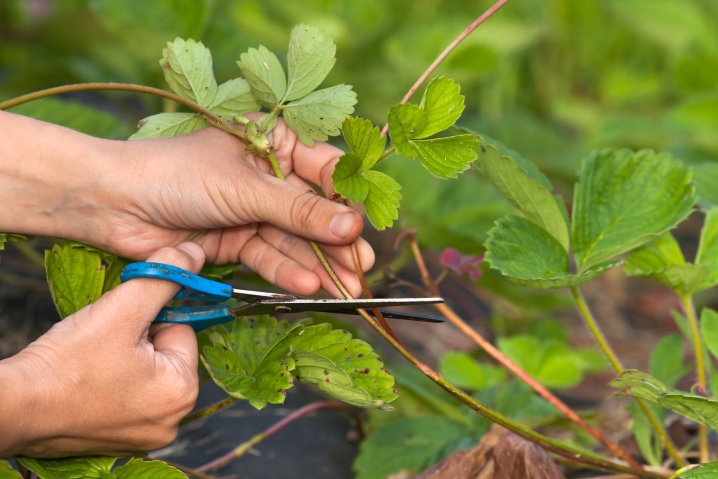
Antenna transplant
One of the most common ways to rejuvenate. The procedure is performed from April to August. The scheme is simple:
- first, bushes with a minimum yield are removed from the garden;
- then the earth is loosened, fertilizers are poured into the soil;
- the third stage involves the selection of a strong and young mustache with roots.
At the end, the grower plants new material in place of the old mustache, thus rejuvenating the strawberries and restoring the plant's yield.
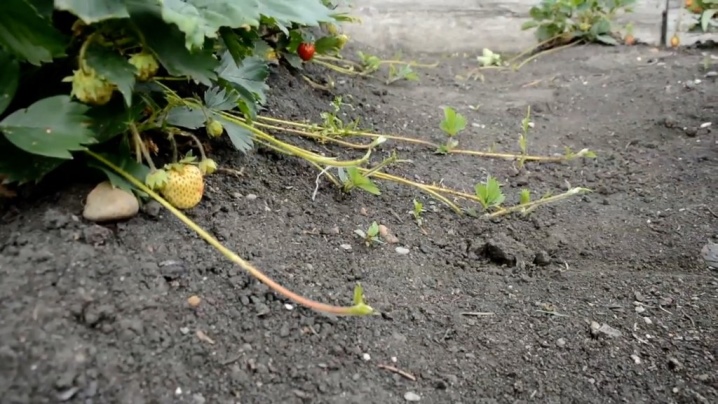
Removing old roots
Allows you to renew wilting bushes in the fall. The optimal time is September, October. Then the sprouts will have time to get stronger before the onset of frost. For rejuvenation, old bushes are dug out, taking out the roots from the ground, and then:
- cut dry or dark roots with scissors, pruning shears;
- plant the bush back;
- start transplanting the next plant.
The method will require abundant watering of the culture. For the winter, cover the strawberries with straw or pine needles, otherwise they will freeze.

Transfer to a new location
Experienced gardeners do not recommend replanting shrubs that are 4 to 5 years old. Such plants are no longer capable of producing a good harvest. However, they are generous with strong shoots that can be used to plant in a new location. In the spring, it is better to plant strawberries in the first decade of April, when the roots begin to actively grow and develop. In this case, the procedure will be painless for the plant, and the variety will quickly adapt to new conditions.
In the spring, the division rejuvenation procedure will be easy if you manage to transplant strawberries before the berries bloom. Transplant rules.
- First, the planting must be inspected for the presence of diseased or dead plants. If you find similar, such bushes should be removed.
- The material selected for transplanting should be dug out while maintaining the integrity of the roots.
- The holes in which the strawberries will be transplanted should be made deep and wide so that the plant has room for growth and development.
- In order not to monitor the state of the root system during watering, it is recommended to lay a layer of sand up to 10 cm thick at the bottom of the hole.
- Quick access of moisture to the roots is provided by compaction of the soil and its subsequent loosening.
- After two weeks from the moment of transplanting, under strawberries, you will need to make the first top dressing so that the plant grows stronger and gains in growth.
It should be borne in mind that the strawberry harvest will bring only next year. Also, old strawberries are transplanted in the summer. But more often this is done to rejuvenate the plantation by expanding the beds and planting young stock.
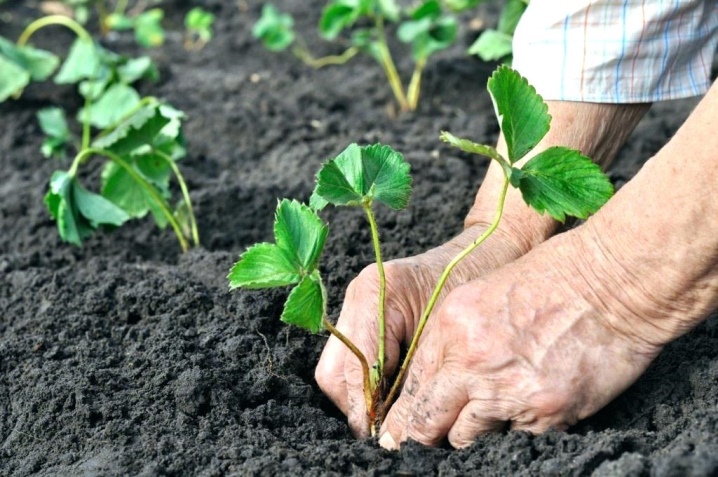
Rules for the procedure in the summer.
- It is best to replant strawberries in July or August when the plant stops bearing fruit.
- The procedure is recommended to be carried out in the morning or evening hours, when the young are not exposed to sunlight.
- From the main bush, you will need to divide and remove excess shoots so that the plant does not waste energy on their growth.
- After transplanting, you will need to add top dressing for the active development of the plant.
- Before planting, the beds should be prepared in advance by fertilizing the soil with compost or manure.
- Only fresh material is suitable for transplantation, bushes with dried roots are not suitable.
When planting is complete, the gardener should take care of the strawberries and prepare them for wintering.
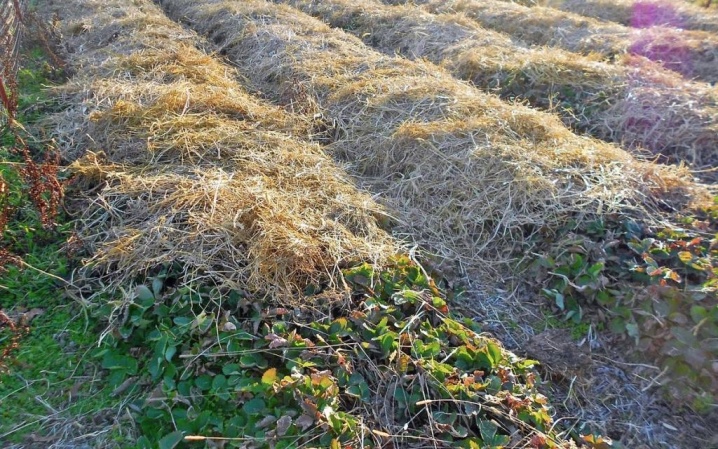
The best option for transplanting is the autumn period, when there is no need to take special care of the plants due to the rain and moist soil. In order for strawberries to please with the harvest, you will need to choose a suitable place. To do this, you should pay attention to the following parameters:
- illumination - sunny places are better;
- soil - should be light and loose with a minimum acidity;
- humidity - strawberries should not be planted in too dry or waterlogged soils.
Before planting, you will need to additionally fertilize the soil so that the plant receives the necessary trace elements to strengthen immunity and active growth.
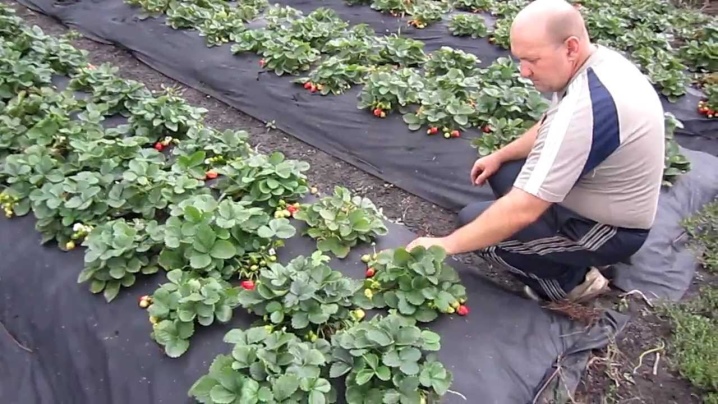













The comment was sent successfully.